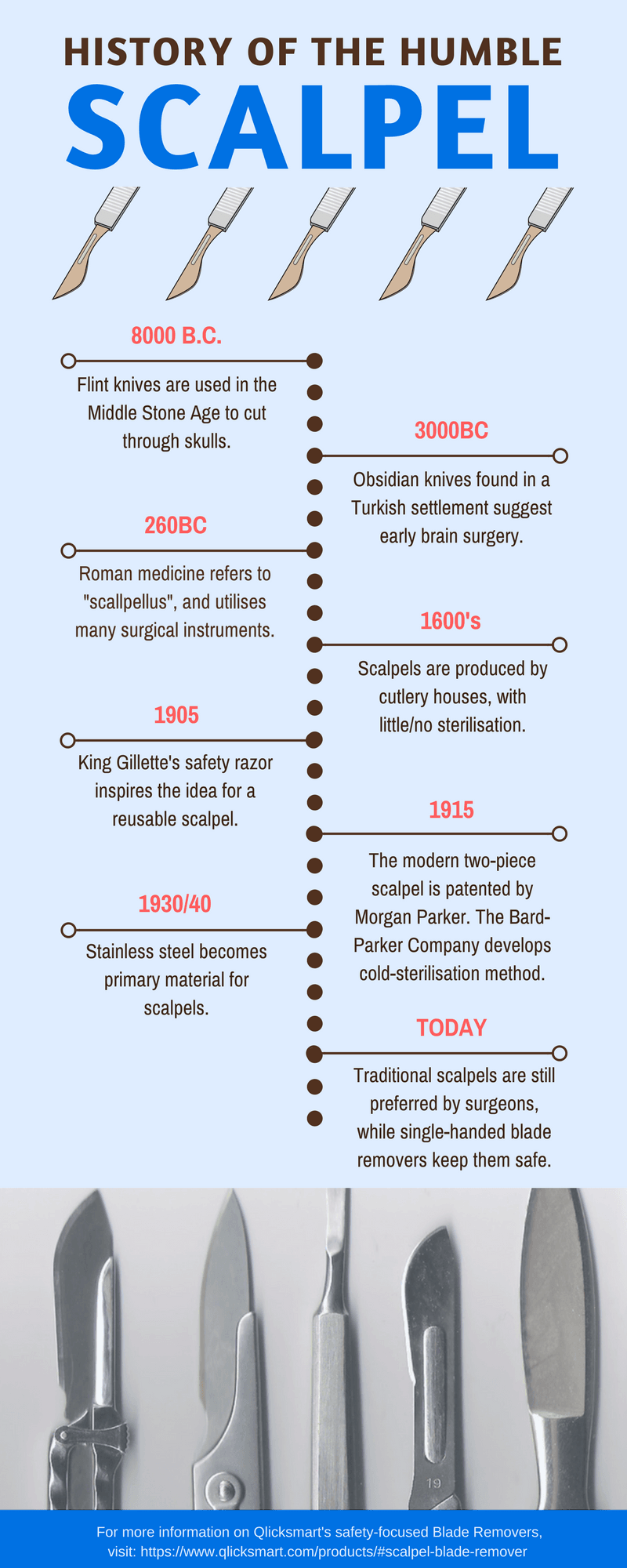The Best Thing Since Sliced Flesh: A history of the surgical scalpel
The surgical scalpel is a tool that has seemingly transcended time– from its beginnings in the Stone Age to the shiny hospital of the modern era. Read on to discover how the surgical scalpel used today came to be.
There is evidence of knives being used in medicine as far back as the Middle Stone Age in 8000BC. These flint knives were used to cut through the skull, though for what purpose historians aren’t completely sure.
Ancient Egyptian blades shaped similarly to scalpels have been discovered, and obsidian blades have been found in a Bronze Age settlement in Turkey. These blades match skull markings from the same time, suggesting early brain surgeries.
Hippocrates from Greece was the first to describe a surgical knife he called a “macairion”. This word is derived from “machaira”, a Lacedaemonian sword from the time. Roman medicine followed in the footsteps of Hippocrates, and they were particularly proficient in making cutting instruments. The Latin word “scallpellus” is where the English word “scalpel” comes from.
For a long time after, surgical knives with one straight edge and the other a sharp, cutting blade were used. Surgical instruments were manufactured by cutlery houses, and with poor hygiene conditions, the same knife would be used repeatedly.
The modern surgical scalpel with a disposable blade was inspired by King Gillette’s invention of the safety razor in 1904. Morgan Parker patented the two-piece scalpel with a handle and removal blade in 1915, which provided stability whilst still being able to exchange blades between uses. Scalpel blades were most often exchanged with fingers, or other surgical tools such as forceps.
Scalpel handles are known as “B.P handles”, after Morgan Parker and his business partner Charles Russel Bard. They were the founder of the Bard-Parker Company, which developed a cold sterilization method to prevent the dulling of blades that occurred during heat sterilization.
Most surgical scalpels were made of nickel or chromium-plated carbon steel until around 70 years ago. Stainless steel took over, as it was a “harder” material which was resistant to corrosion.
Today, surgeons are still using the 2-piece surgical scalpel. There are over 30 varieties of scalpel blades used, and the B.P handle also comes in various sizes. There have been various “safety scalpels” which have been introduced in the past two decades, though surgeons report that they still prefer the stainless steel traditional surgical scalpel.
The use of forceps or fingers to remove scalpel blades is still a shocking trend in hospitals, which can contribute to the 1000 scalpel blade injuries each year. To combat scalpel blade injuries, ORs are recommended to combine a hands-free-passing-technique with a single-handed blade removal system, such as Qlicksmart’s BladeFLASK blade remover.
Akin to the wheel, the surgical scalpel is a tool whose simplicity is matched by its usefulness. From stone and obsidian knives, to stainless steel reusable handles, the surgical scalpel has remained an important tool for ‘surgeons’ throughout human history.


